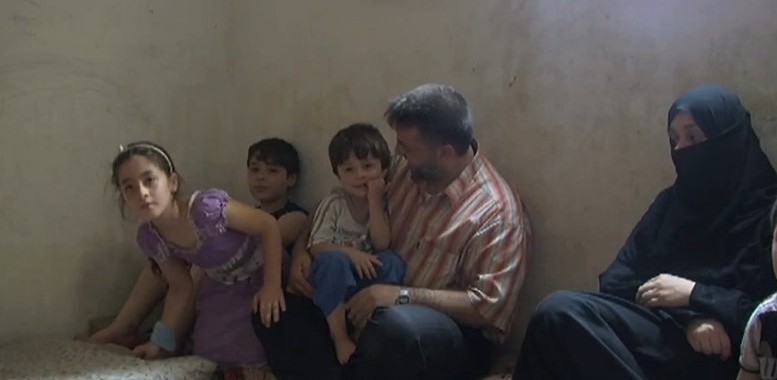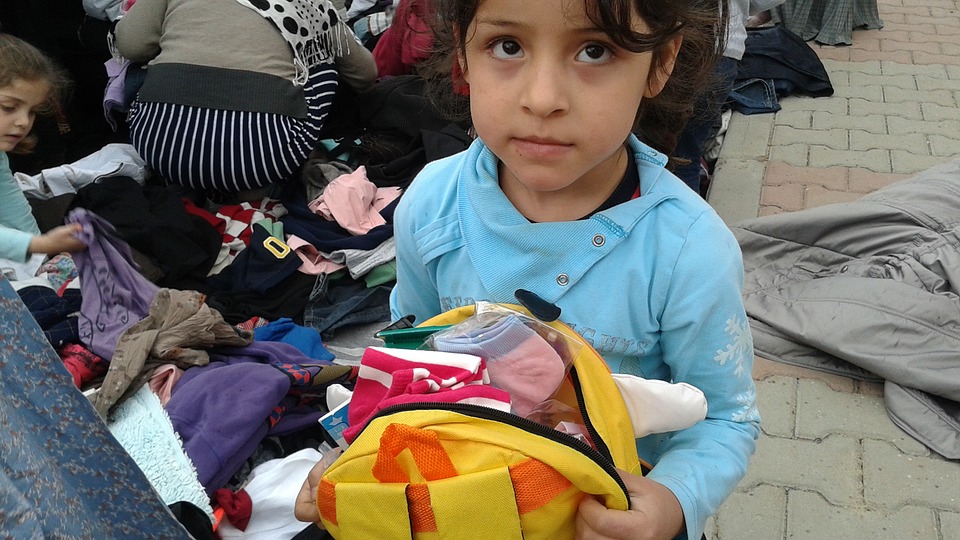Hostility Towards Syrian Refugees in Lebanon Fueled by Fear
Politically-Fragile Lebanon Won’t Help Syrian Refugees Resettle, Leading to Hostile Anti-Refugee Sentiment
Millions of Syrian refugees have been displaced by conflict in their home country. The war and violence that continues to threaten Syria has forced many to flee to neighbouring countries. These refugees seek safety so that they may live their lives free of fear. While many countries have helped (and continue to help) Syrian refugees resettle and integrate within their borders, some refuse to offer official protection.
Increasing Hostility Towards Refugees
Growing hostility towards newcomers exists in many countries. This hostility is fostered by fear of the unknown. Many of these countries fear political, social, and economic uncertainty that they believe will worsen with the arrival of newcomers. Lebanon is one country that has seen a major influx of Syrian refugees since the onset of the Syrian civil war. However, Lebanon won’t allow refugees to resettle, fuelling national hostility towards this vulnerable population.
Due to unwelcoming messages from the Lebanese government, there is growing nationwide anger against Syrian refugees. Lebanese President Michel Aoun made it clear that Lebanon will not allow the settlement of refugees, and Foreign Minister Gebran Bassil referred to these refugees as occupiers invading the country. These negative messages are fuelling a growing hostile attitude towards refugees in Lebanon. Protesters are rallying against this so-called “Syrian invasion,” claiming that their jobs are threatened by the newcomers.
Ongoing Struggles
Since Lebanon does not have a national plan to help Syrian refugees resettle, refugees must fend for themselves in “safe zones.” Instead of helping the refugees integrate into society, they are living in refugee camps without access to employment or education. The only help they receive is from aid organizations.
There are currently 1.2 million Syrian refugees in Lebanon, and 400,000 of those are children. Seventy percent of the refugee population live below the poverty line. Since they are not welcome to resettle in the country, they cannot obtain work permits or access education. Those who do find work receive poor pay for what is often hard labour.
Unfounded Local Fears
While some claim unemployment among Lebanese citizens has risen since the onset of the Syrian civil war, others argue that the refugees are good for the economy. The refugees are willing to work the jobs that many Lebanese citizens refuse. In addition, they buy goods and boost the economy with the help of funding from aid groups.
Locals also fear that helping refugees socially and economically will make them stay in Lebanon for longer. However, most of the student-age refugees are unable to access education since aid organizations are having trouble running schools. Furthermore, high school graduates cannot study at Lebanese universities since these schools refuse to recognize high school certificates from Syrian opposition organizations.
As with other nations around the globe, the fear of refugees taking over stems from the political and economic uncertainty that plagues Lebanon. While this uncertainty is cause for legitimate feelings of fear, they should not take over another human’s right to safety and well-being. The Syrian refugees are not resettling to take over a country, but out of a life-or-death necessity. They literally have no choice but to find new homes because there is a good chance that they will be hurt or die if they don’t.
September’s Significant Drop in Asylum Seekers
Compared to August’s High Number of Refugee Claimants Crossing into Canada at Irregular Borders, September Saw a Drastic Decrease in These Numbers
This summer saw an extremely high number of asylum seekers crossing into Canada at irregular borders, most of them passing through to Quebec. Apparently, this high number may have been due (in part) to inaccurate information spreading online about the ease of gaining permanent resident status in Canada. In response to this, the Canadian government clarified that not everyone who files a refugee claim would automatically be granted asylum status in Canada; if their claim is not successful, they may still face deportation to their home country. Perhaps, in part due to the Canadian government’s response, the number of asylum seekers crossing into Canada has dropped significantly. For more information about making an asylum claim in Canada, contact a refugee law office.
According to a Global News article, the number of asylum seekers crossing into Canada at irregular Canada-U.S. borders decreased by more than two-thirds in September, following August’s peak numbers. In August, many people crossed the border and entered into Canada daily, with a total of 5,712 people for the entire month. But the month of September saw only 1,881.
After U.S. President Donald Trump announced the end of protected status for Haitians (those who left Haiti following the devastating 2010 earthquake), many Haitians turned to Haitian communities in Canada, most notably in Montreal. However, it seems the rumours of guaranteed permanent resident status in Canada may have spread to online communities, encouraging many to cross the Quebec-U.S. border.
The influx of asylum seekers this year has caused a lengthy backlog in processing refugee claims. Now, the wait time is up to 16 months for a hearing. During this wait, asylum seekers are forced to live in limbo, unsure of whether they can start their new life in Canada or if they need to brace themselves for deportation.
It’s been reported that a high number of asylum claims have been accepted this year, showing that claimants have a real fear and risk of persecution in their home countries. Immigration officials are also sympathetic to those fearing Trump and his anti-immigration stance.
While many of these claimants are gaining refugee status, the Canadian immigration department does not plan to allocate any more resources to the refugee board to help reduce the backlog of claims and the long wait time that follows. It’s possible that immigration officials hope that the drop in asylum seekers this September will ease the burden on the refugee system, and would rather put their efforts towards preventing more illegal border crossings than spend resources to help speed up the wait times for those who have already arrived. However, this is a short-sighted approach as reflected in the already long wait times of 16 months for a hearing. The government should act immediately to address this situation before the backlog grows to several years, with significant negative consequences.
If you have any questions or would like to know more about the asylum claims process, contact a refugee law office and get the help you need.
Government Set to Announce 2018 Numbers for Immigration in Canada
New Report Suggests Canada Could Handle Up to 450,000 Newcomers Annually
Canada is a large country but has a comparatively small population. A low birth rate and aging population mean the Canadian population isn’t growing as fast as it could. In turn, there won’t be enough workers to fill gaps in the workforce once all Baby Boomers have retired. As a result, the economy will grow just as slowly.
Thankfully, there is hope. Immigration has been cited as a key way to grow the population and provide support to economic growth. According to an article from Global News, the federal government plans to announce its 2018 immigration target numbers by November 1, 2017.
Raising the Bar
Canada’s current immigration intake numbers are set at 300,000 annually or about 0.8 percent of the country’s population. However, the government has been looking at increasing this number and what it could mean for the rest of the country in terms of economic growth.
The government’s Advisory Council on Economic Growth recommends increasing the target immigration numbers to 450,000 annually by 2025 (about 1.1 percent of Canada’s population) and leaving that target number in place until 2040.
A new report from the Conference Board of Canada looks at the possible outcomes of these population targets for the future of Canada. If Canada were to leave the targets as is, Canada would face slow economic growth and higher health-care costs.
Aging Populations and the Economy
The decrease in Canada’s working-age population would lead to slower economic growth. Canada’s population is aging as a result of low birth rates and the large Baby Boomer generation entering retirement age. With more job vacancies, fewer workers, and fewer people contributing to the economy, the economic outlook for Canada isn’t bright. But an increase in immigration numbers could help.
If the immigration target increased to 450,000 annually by 2025, Canada could expect economic growth of two percent per year. Those who immigrate to Canada tend to be younger and working-age. They could help fill the gap that retiring Baby Boomers will leave in the workforce and keep Canada’s economy steady.
The main issue with an increase in immigration numbers is the lower wages that newcomers earn. New arrivals typically earn about 83 percent of the national average wage. This could decrease the country’s per capita GDP. But there is one sure way to rectify this wage disparity: allow newcomers to work at higher-paying jobs that they are qualified for. Many newcomers hold post-secondary education that remains unrecognized by Canadian employers, leaving them stuck with low-income jobs instead of continuing on their career path.
A target of 450,000 per year may seem high. But given Canada’s long-term future, it may not be enough to fill the shoes of retiring Baby Boomers. Canada benefits from welcoming more young and skilled newcomers to meet the needs of the workforce and strengthen the economy.
Canada Discusses Management Of 32,000+ Asylum Claims This Year
Canada’s Immigration Department Recently Outlined How It’s Handling This Year’s Spike in Asylum Claims
Canada’s surge in asylum seekers has made headlines since the beginning of the year. The number of asylum claims filed in Canada has steadily increased since January, spiking this summer with hundreds of asylum seekers crossing into the country on a daily basis in August. Quebec is the most popular point of entry for asylum seekers making irregular border crossings, with so many coming in at once over the summer that the government had to set up makeshift housing. The federal government faced criticism for its handling of this surge of asylum claims, which led to a large backlog and lengthy delays in processing claims. Despite this, Canada’s immigration ministry has assured the government and public that they have a handle on the situation.
According to an article from the National Post, Canadian immigration officials, along with representatives from the RCMP and the Canada Border Services Agency (CBSA), recently briefed House of Commons committees on public safety and immigration on the current state of asylum seekers in Canada. The officials assured these committees that they have control over the year’s surge in asylum claims.
Rising Claims
Since January 2017, there have been 32,000 asylum claims made in Canada, with 13,211 of those from asylum seekers crossing at irregular borders. And while this is a significant increase over last year, Canada does experience waves of asylum claims over the years. In 2009, there were 33,000 asylum claims made in Canada. However, the significant numbers crossing at Quebec’s unofficial border alone has sparked this year’s media attention on asylum seekers.
The number of asylum seekers crossing into Quebec has dropped since August, going down from hundreds per day in the summer to about 50 per day this fall. Canada’s Minister of Immigration, Refugees and Citizenship Ahmed Hussen spoke on the progress the government has made in reducing the backlog for claims processing, specifically reducing the delay for those awaiting eligibility interviews.
Dealing with the Backlog
To speed up the process, the department increased the number of interviews scheduled daily from 30 to nearly 200. These interviews are supposed to occur at the border at the time of entry into the country. However, the summer’s spike in asylum claims means these interviews have seen delays of several months.
Hussen said there are currently about 2,000 asylum seekers waiting for these interviews. While waiting, they have received temporary healthcare coverage, which is normally reserved for those whose claims have been approved.
Immigration officials have also reduced the backlog in work permit processing for asylum seekers. They aim to get more people working in Canada sooner. To reduce backlogs in processing asylum claims, the immigration department has reassigned about 80 staff members to handle these claims. Additional RCMP and CBSA personnel have also been assigned to process asylum seekers in Quebec.
Ongoing Challenges
Although backlog for the processing of initial interviews is shrinking, the government still faces criticism over significant wait times (now around 16 months) for a refugee hearing to take place. Refugee claimants have to wait in a state of limbo for extended periods of time before their case is even scheduled for a hearing. This uncertainty adds to their anxiety and stress of going through the refugee claim process, often with their families and children. The government undoubtedly will have to allocate additional resources to ensure additional Board Members are hired to hear the surge in refugee cases, in order to avoid a similar situation to those of the “legacy claimants” who have been waiting for several years for their refugee hearings.
Canada’s Immigration System Still Faces Criticism Over Human Rights Violations
Report Sent to the UN Calls for Changes to Canada’s Immigration Detention System
Although Canada is a global leader for welcoming immigrants and refugees, critics argue that the immigration system is in severe violation of human rights for migrants. The practice of indefinite immigration detention is the chief target for such criticism, of late.
According to an article from Metro News, a group of human and civil rights organizations has filed a submission to the UN Human Rights Council, criticizing Canada’s treatment of migrants, just in time for the UN’s review of Canada’s human rights record. Every four years, the UN Human Rights Council reviews Canada’s domestic human rights conditions and records. The next review is planned for early 2018.
Advocacy Group Pushes for Review of CBSA's Handling of Detainees
This group of human rights advocates is pushing for an independent body to review how the Canada Border Services Agency (CBSA) handles immigration detainees. The report states that Canada continues to violate international law with its immigration system.
Canada must make changes to this detention system—and quickly. While Canada has a reputation for high human rights standards, the country still falls behind in its treatment of vulnerable populations.
Over the past year, the Canadian government has addressed some outstanding issues in the immigration system, but according to advocates, many issues persist and continue to violate human rights laws. For example, Canada still has no limit to the length of immigration detention. Furthermore, many detainees belong to vulnerable populations, such as children and those suffering from mental illness.
Proposed Federal Changes to Immigration Detention
In 2016, Public Safety Minister Ralph Goodale said $138 million in funding would be used to improve alternatives to immigration detention and rebuild facilities. So far, improvements in the system include:
- A decrease in the number of immigration detainees since 2015;
- Restored health-care coverage for refugees; and,
- Additional funding for improving mental and medical health services for detainees.
The advocate report deems the detention of children and those with mental illness unnecessary, especially since there are better care and housing alternatives. These vulnerable populations shouldn’t be incarcerated in prisons (meant for criminal inmates) while awaiting immigration decisions. Detention can lead to serious mental health issues for anyone but is especially harmful to children and those with pre-existing mental illnesses.
The uncertainty with indefinite detention also worsens stress for these people. Instead of trying to help those with mental illness by providing adequate care, the detention review hearings see mental health issues as a cause for continued detention.
Is An Independent Monitor Necessary?
Detention review hearings are typically held monthly, but the decisions are more often in favour of continued detention. Previous hearings tend to influence current decisions and are not necessarily scrutinized, making it more difficult for detainees to secure their release.
The CBSA claims to transfer immigration detainees from immigration detention centres to provincial jails in order for the detainees to receive improved mental health care. However, the advocate report claims that detainees rarely receive the help they need.
Canada’s criminal justice system has more in place to protect inmates’ human rights than immigration detainees. Conditions for immigration detainees held in provincial jails aren't currently monitored. Independent monitors are often barred from these facilities, and their reports do not get published.
The advocate report recommends a 90-day immigration detention limit, and for Canada to appoint an ombudsperson or form an independent body to monitor and review the CBSA and complaints filed against the agency. Without changes, Canada cannot live up to its reputation for protecting the human rights of all persons in the country. Furthermore, it cannot maintain its leadership in the area of immigration.





